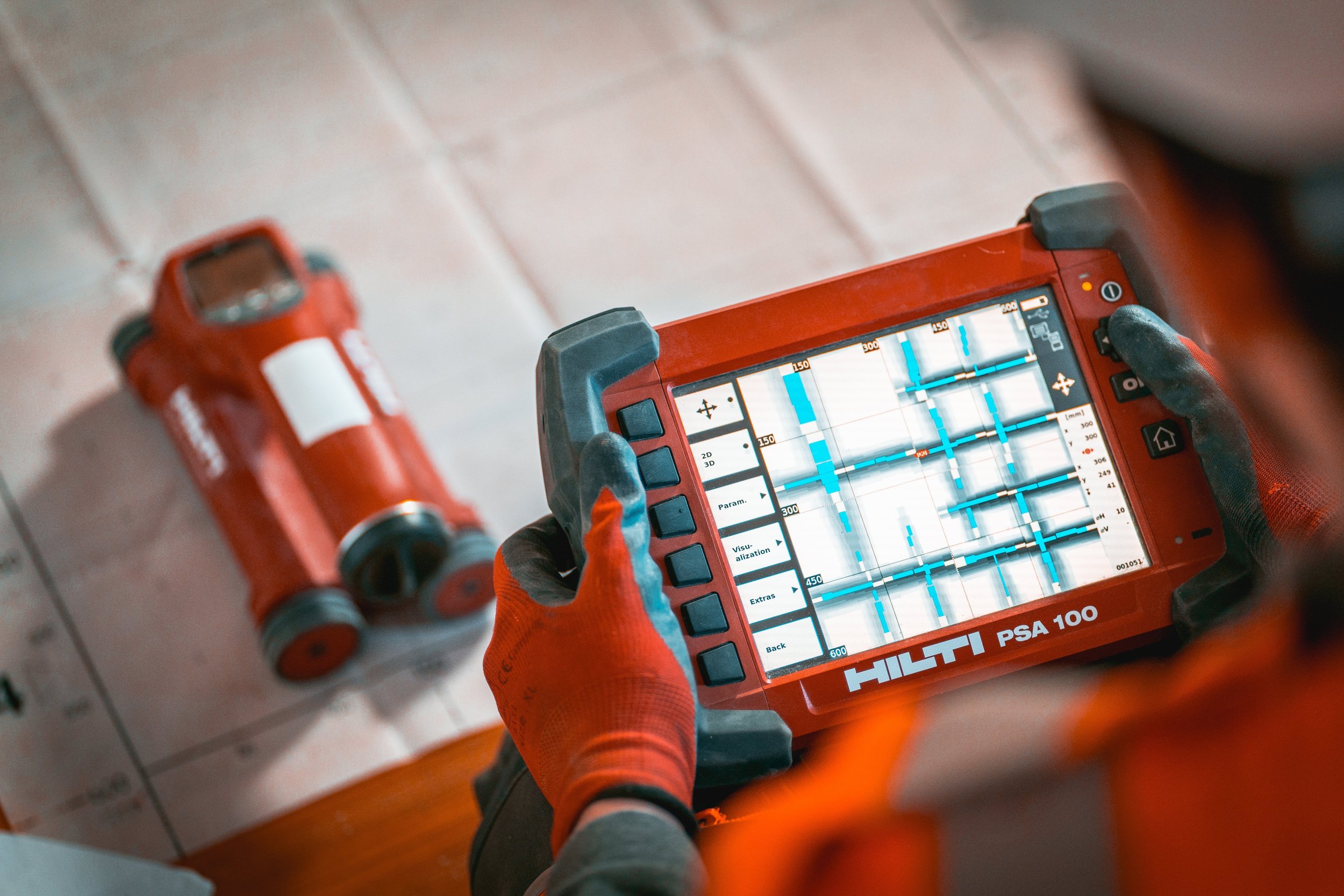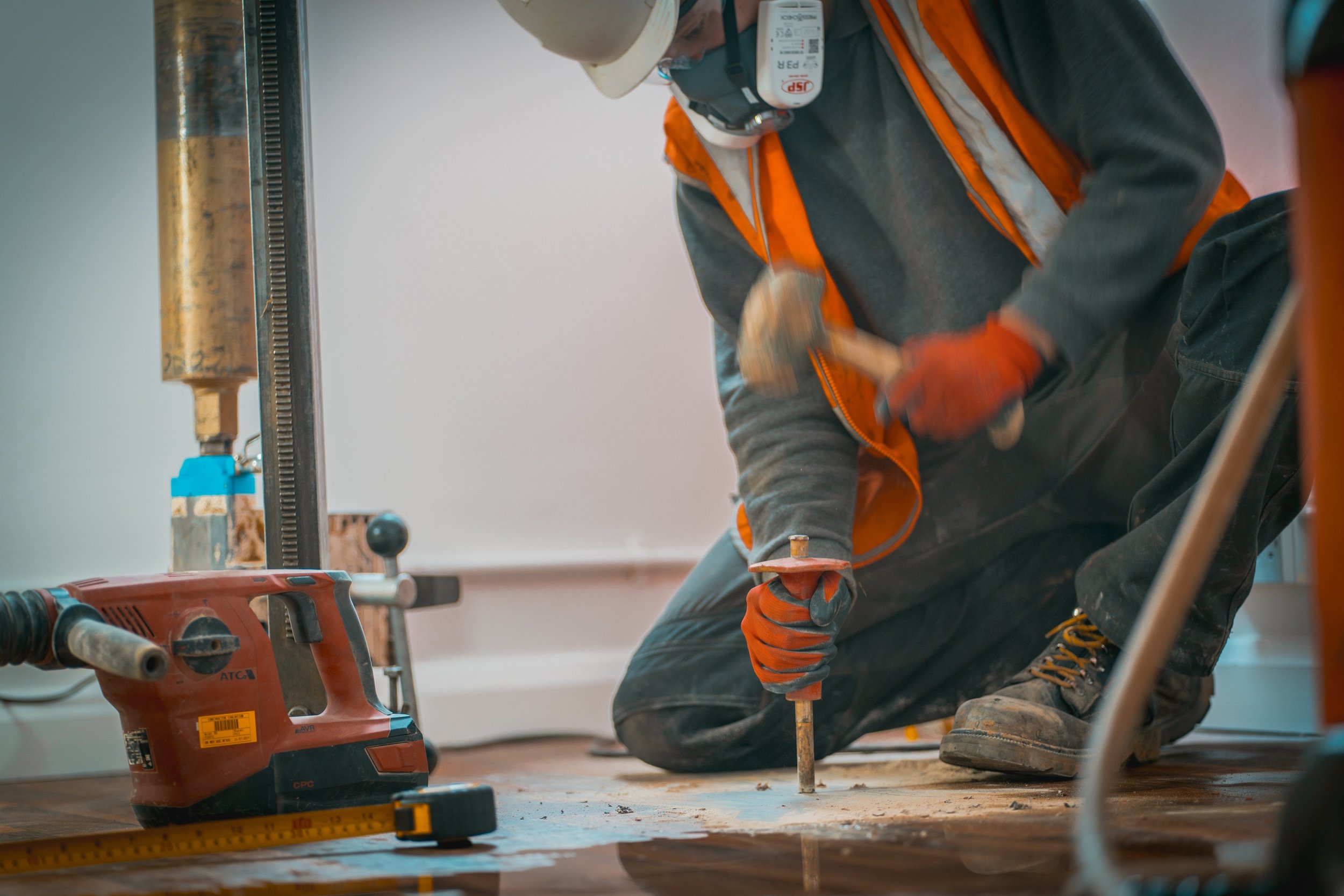
X-Ray Fluorescence (XRF) Testing
X-Ray Fluorescence (XRF) Testing
X-Ray Fluorescence (XRF) testing is a sophisticated analytical technique used to determine the elemental composition of materials. This non-destructive testing method employs x-rays to excite atoms in the sample, causing them to emit secondary (or fluorescent) x-rays. The emitted x-rays are then measured to identify the elements present and their concentrations.
Benefits of XRF Testing in the Construction Industry
Non-Destructive Testing: One of the primary advantages of XRF testing is that it is a non-destructive method. It allows the analysis of materials without causing any damage, which is particularly beneficial for ongoing projects where integrity must be maintained.
Speed and Efficiency: XRF testing delivers rapid results, often in real-time. This efficiency helps streamline the decision-making process in construction projects, ensuring delays are minimised.
Cost-Effective Solution: By providing quick and accurate results, XRF testing helps avoid costly errors and rework associated with material failure or contamination issues. This cost-effectiveness contributes to the overall profitability of construction projects.
Enhanced Safety: XRF testing contributes to a safer construction environment by identifying hazardous materials early in the project cycle. This proactive approach to safety reduces risks for workers and minimises exposure to toxic substances.
Versatility: XRF testing is applicable to a wide variety of materials, making it a versatile tool for construction professionals. Whether evaluating concrete, metals, or soil, XRF can adapt to many different testing scenarios.
Applications of XRF Testing in Construction
XRF testing plays a crucial role in various sectors of the construction industry, including:
Material Analysis: XRF is often used for analysing construction materials such as concrete, metal, and soil. By providing immediate results, it helps assess the quality and suitability of materials before they are utilised in building projects.
Compliance and Regulatory Testing: The construction industry is subject to stringent regulations regarding material safety and environmental protection. XRF testing is instrumental in ensuring compliance with standards related to hazardous materials, such as lead or cadmium. This testing helps to avoid potential legal liabilities and promotes a safe working environment.
Site Contamination Assessment: In cases where construction sites may be contaminated, XRF testing can quickly identify hazardous substances in soil or building materials. This assessment is crucial for risk management and determining appropriate remediation strategies before construction begins.
Recyclability Assessment: With an increasing emphasis on sustainability, XRF testing allows construction firms to evaluate the recyclability of materials. By identifying the elemental composition of metal scraps or debris, companies can make informed decisions regarding recycling and waste management.
Contact Us
X-Ray Fluorescence (XRF) testing is an invaluable tool in the construction industry, providing essential insights into material composition, safety, and compliance. Its non-destructive nature, rapid results, and cost-effectiveness make it a preferred choice for construction professionals seeking to enhance project efficiency and safety. For expert XRF testing and other material assessment services, contact Construction Diagnostics to ensure your construction projects meet the highest standards.
Our Services
Please Click on the tiles below to find out more about the services we offer
Contact Us
If you have any queries about any of our services please contact us, a member of our team will be happy to advise.






